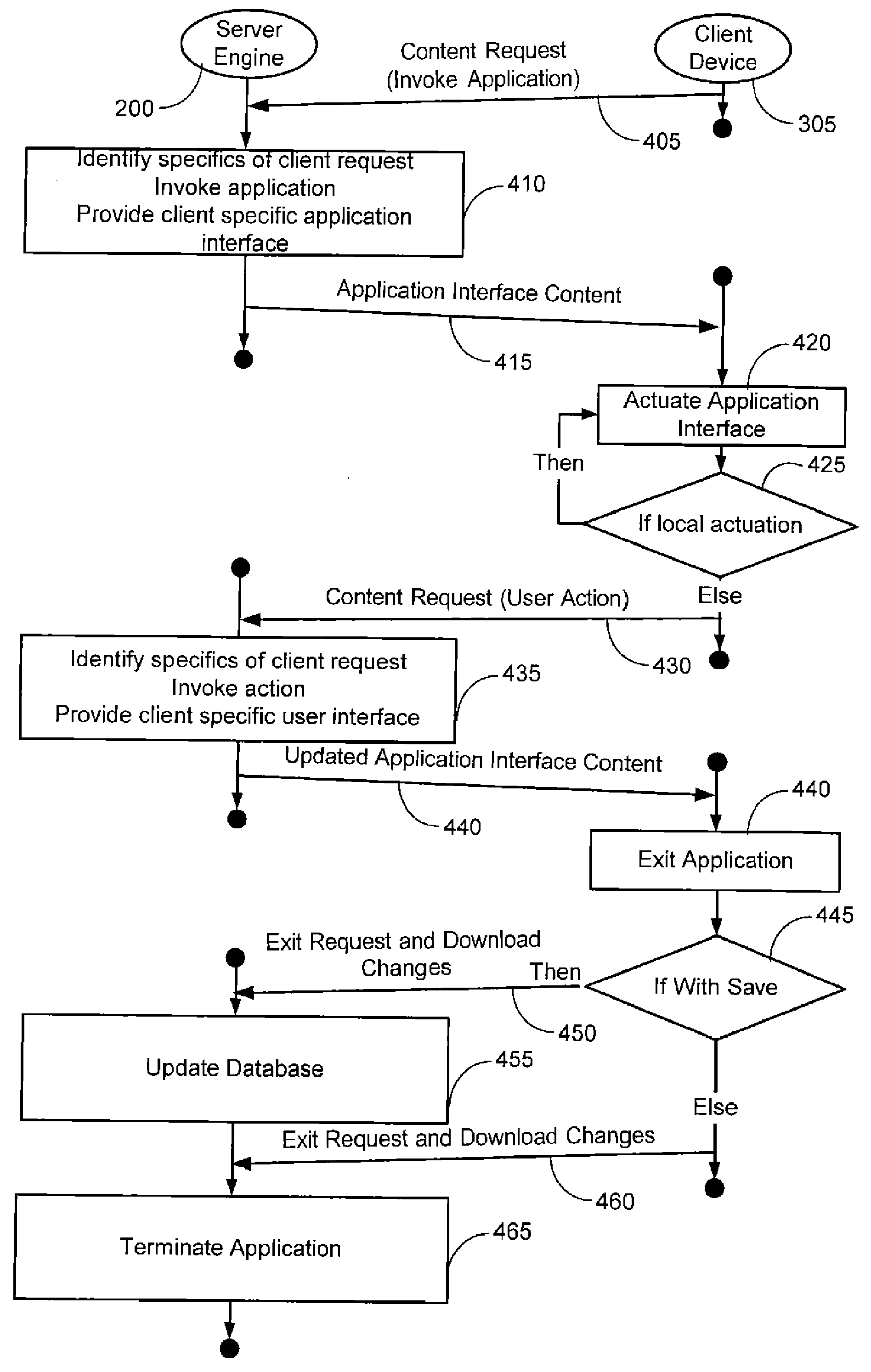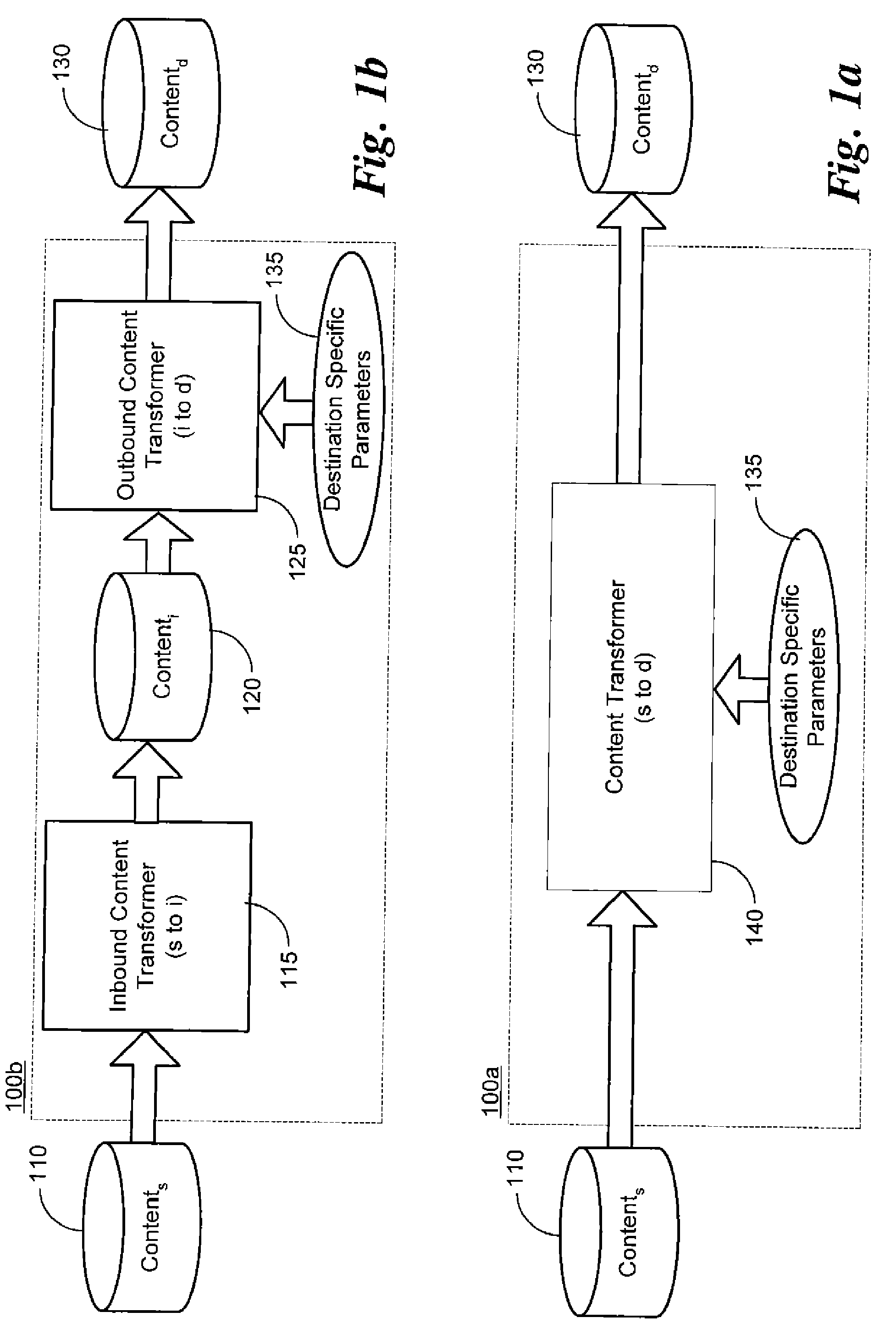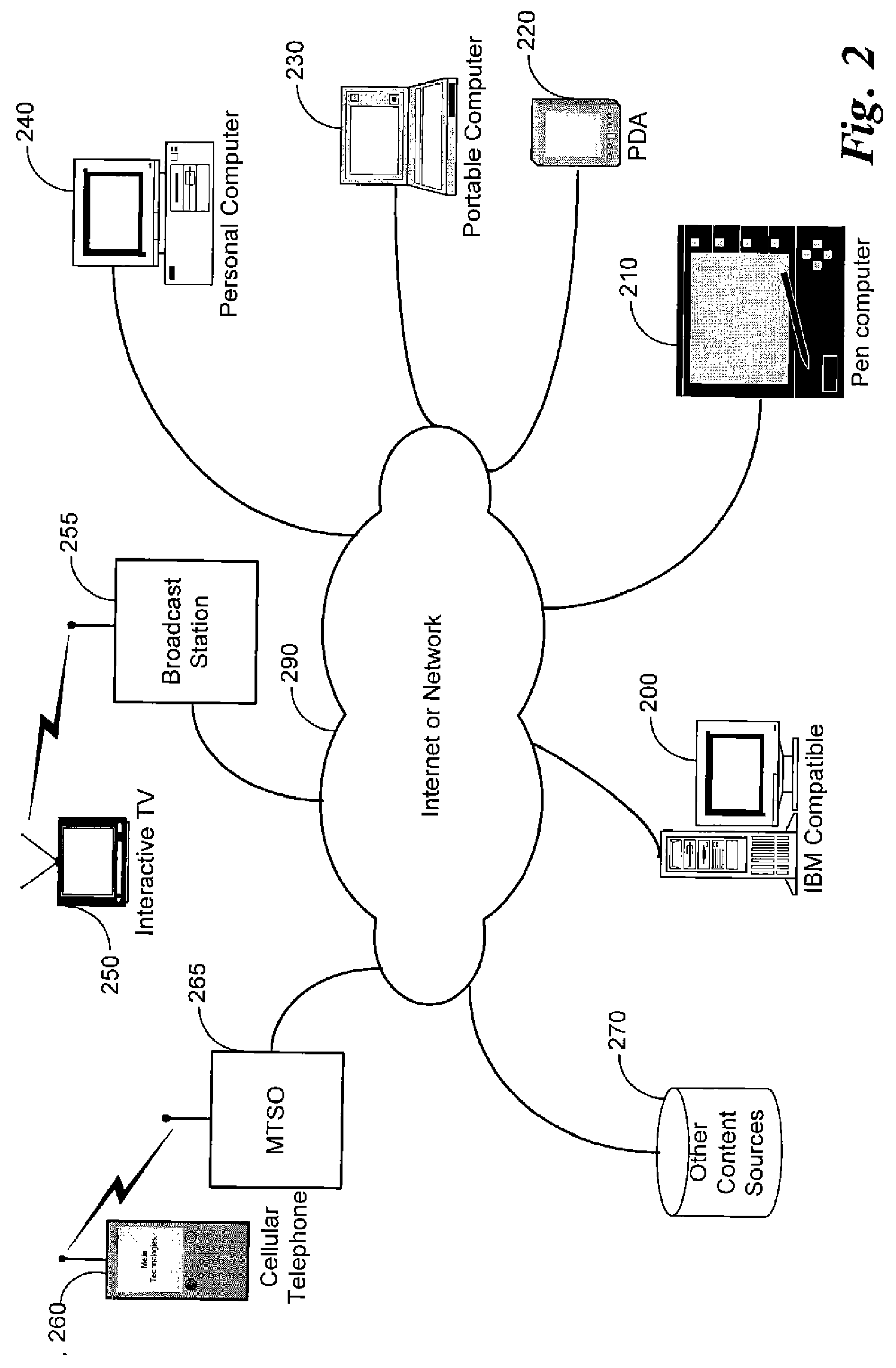Content management and transformation system for digital content
a technology of applied in the field of digital content content management and transformation system, can solve the problems of incompatibility of information or content, inability to easily share content, and artificial limitations of technology, and achieve the effect of expanding the usefulness of the world wide web
- Summary
- Abstract
- Description
- Claims
- Application Information
AI Technical Summary
Benefits of technology
Problems solved by technology
Method used
Image
Examples
Embodiment Construction
[0037] The present invention provides a mechanism for transforming content between a variety of formats through the use of a transformation engine. In a general embodiment of the present invention, the transformation engine reads content in one format and transforms the content into another or the same format. Turning now to the figures in which like numerals, letters and labels refer to like elements throughout the figures, various embodiments and applications of the present invention are provided.
[0038]FIG. 1a is a block diagram illustrating the functional components of an exemplary embodiment of the transformation engine. The transformation engine 100a operates to transform source content 110 from its existing format to a destination content format 130 that is compatible with a destination target. The transformation engine 100a includes an s to d content transformer 140, where s and d are variables identifying the format for the source content and the destination content respect...
PUM
 Login to View More
Login to View More Abstract
Description
Claims
Application Information
 Login to View More
Login to View More - R&D
- Intellectual Property
- Life Sciences
- Materials
- Tech Scout
- Unparalleled Data Quality
- Higher Quality Content
- 60% Fewer Hallucinations
Browse by: Latest US Patents, China's latest patents, Technical Efficacy Thesaurus, Application Domain, Technology Topic, Popular Technical Reports.
© 2025 PatSnap. All rights reserved.Legal|Privacy policy|Modern Slavery Act Transparency Statement|Sitemap|About US| Contact US: help@patsnap.com



